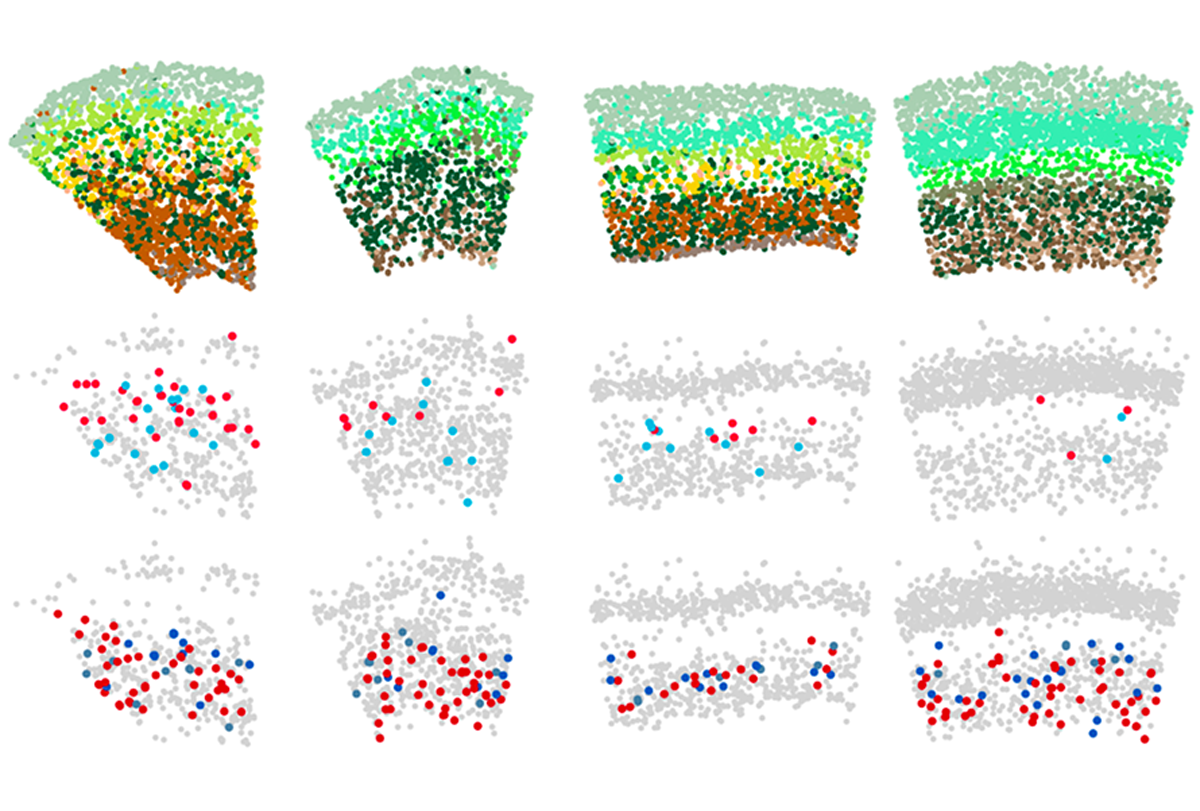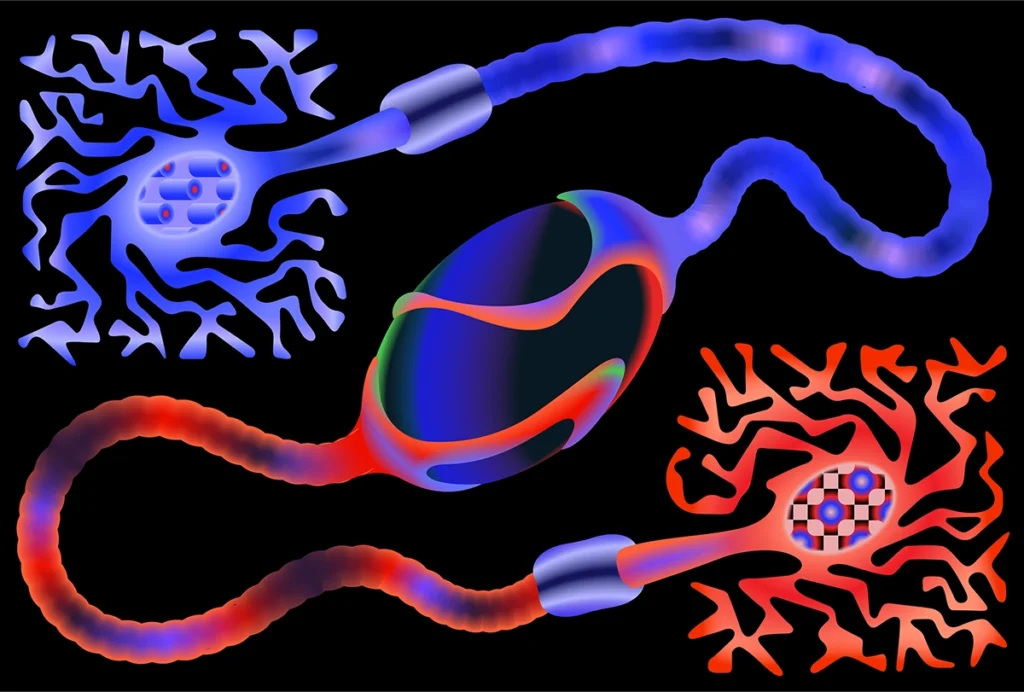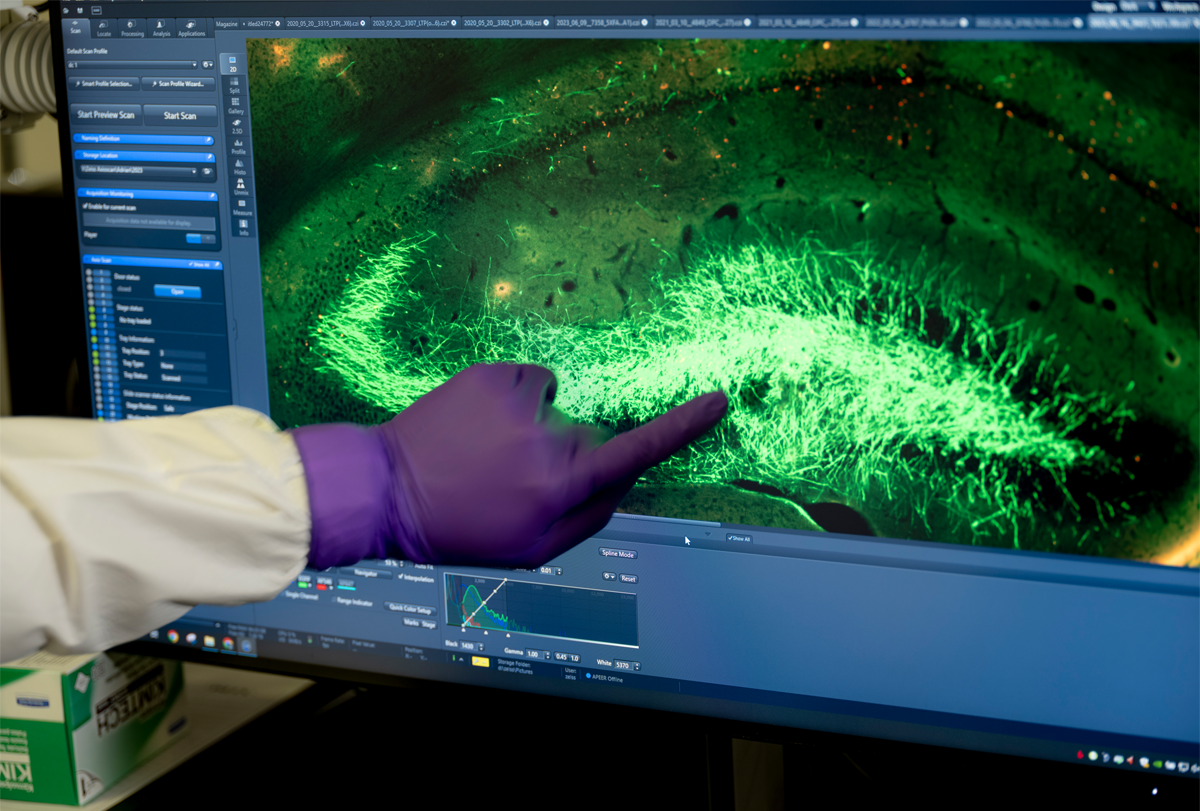Ever since Gordon Fishell set out to understand inhibitory neurons 30 years ago, he says he has been propelled by one central question: How do these cells develop?
In mice, the cells originate in a deep brain region called the subpallium but migrate during fetal development into the cortex, where they mature into different subtypes and form connections with excitatory pyramidal neurons. The interneuron subtypes vary in abundance by cortical region and appear to pair up with particular pyramidal neuron types. But how do these interneurons “know” where to go and which identity to adopt?
Fishell, professor of neurobiology at Harvard Medical School, may finally have some fresh clues to that mystery. The cells’ development, and their diversity and abundance in the cortex, is directed in part by their pyramidal partners, according to a new preprint from his lab. Yet each interneuron subtype uses a different mechanism to respond to the pyramidal neurons.
That discovery helps reveal how these two cell types form the brain’s inhibitory circuits, says Martin Munz, assistant professor of physiology at the University of Alberta, who was not involved with the new study.
“We’re still trying to understand how neuronal circuits assemble, how they decide to become connected with each other, and how the cells become their specific cell types,” he says. “For the first time, this paper really nicely shows how pyramidal neurons regulate interneuron subtypes.”
Unlike pyramidal neurons, which are born in the cerebral cortex and travel only through the laminar layers, interneurons make a “huge migration, like Odysseus’ journey,” through the brain, says Xin Jin, associate professor of neuroscience at the Scripps Research Institute, who was not involved in the work. The distance from where interneurons begin and where they end up is so vast that the directions can’t all be contained in the cells’ gene regulatory networks—though some certainly are, she says.
Pyramidal neurons provide some of the missing directions along the way, according to the new preprint. “The presence or absence of that signal makes [the interneurons] into one subtype versus the other. I think these are pretty dramatic changes,” Jin says.
Fishell and his colleagues posted the findings on bioRxiv in July.
F
ishell and his lab focused on interneuron subtypes that express either somatostatin (SST) or parvalbumin (PV) in mice that lack the FEZF2 gene, which is expressed only in deep-layer pyramidal neurons. At 20 days old, these mice lack the pyramidal neurons that populate layer 5 of the cortex but show an increase in those that occupy layer 6, an earlier finding that Fishell’s team confirmed.What’s more, the SST and PV interneurons that typically associate with layer 5 pyramidal cells decreased by about 80 percent, whereas the interneurons that reside in layer 6 doubled, the preprint shows.
This result suggests that the pyramidal neurons help to refine the interneurons’ identities and local circuits, and that they do so in a cellular context-specific manner.
The layer 5 interneurons adjusted to the loss of layer 5 pyramidal neurons in a cell-type dependent way, further experiments revealed: The SST interneurons tended to die off, whereas their PV counterparts transformed into layer 6 PV interneurons.
The difference between the SST and the PV cells’ response might relate to the speed at which each matures postnatally, Fishell says. The SST cells mature earlier and create scaffolding that allows circuits to form by the first postnatal week, he says.
“By the time you get to the point where this occurs, the SST cell already has a job. It needs to function. It can’t change its identity, so those cells die” if there are no pyramidal cells for them to wire up with, he says. A PV cell, which matures later, “can still respond to the cues and change its fate.”
F
or Fishell, the findings help resolve his original inquiry about whether the environment creates interneuron identity or simply allows predetermined subtypes to survive. It can be both, he says, depending on the interneuron subtype.But humans have a higher proportion of certain interneuron subtypes compared with mice, and thus a “very different ratio” of interneurons to pyramidal cells, cautions Arnold Kriegstein, professor of neurology at the University of California, San Francisco. Specifically, humans have a higher proportion of caudal ganglionic eminence interneurons than mice do, and he says he suspects that there could be “yet another mechanism” responsible for regulating this additional interneuron subtype, worth studying in mice and people.
Even still, if the paper remains relatively unchanged as it moves through the peer-review process, Kriegstein says he thinks the work “would be quite influential in helping direct the next set of questions.” Such future research “could involve a deeper probing of the molecular mechanisms involved. Those differences [in cell type ratios] compared across species would be interesting, as well as how they compare across additional cell types.”
Understanding how these circuits form and how similar circuits appear in the visual cortex and the prefrontal cortex, despite the areas having such different functions, is driving Fishell’s next line of questioning, he says.
“I think one of the real questions is, how do they get wired in there? And to what extent can we really understand how these circuits are made?” Fishell asks. He says he suspects that following this line of inquiry surrounding pyramidal neurons and how they cue interneurons can lead him on the right route: “What are the signals the pyramidal cells are doing? How are they doing that? What are these miraculous signals?”
Like the cells themselves, these new questions are helping Fishell to redirect his original line of inquiry.





